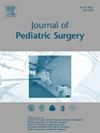富血小板血浆作为结晶酚的辅助疗法治疗小儿乳头状窦疾病:前瞻性随机对照试验》。
IF 2.4
2区 医学
Q1 PEDIATRICS
引用次数: 0
摘要
研究目的本研究旨在评估富血小板血浆(PRP)作为结晶酚(CP)辅助剂治疗小儿朝天鼻窦疾病(PSD)的安全性和有效性:伊斯坦布尔埃森尤尔特医院开展了一项单中心随机对照试验。87 名 0-18 岁的患者被随机分配到两组:CP 组(42 人)和 CP + PRP 组(45 人)。患者到达诊所后,开始进行人工剃须,必要时每 6-8 周进行一次激光脱毛。对于有皮样脓肿的患者,则进行切开、引流和抗生素治疗。对治疗区域进行消毒,并进行局部麻醉。进行脱毛和刮除,然后涂上结晶酚。CP + PRP 组还注射了 PRP。最后进行伤口包扎和彻底消毒。该研究已注册 https://clinicaltrials.gov/ (NCT06324656)。结果:结果:CP + PRP 组的愈合时间(19.4 ± 7.88 天)明显短于 CP 组(30.7 ± 12.9 天)(各项比较均为 0.05)。在总并发症发生率方面,各组之间没有差异(P = 0.398)。CP + PRP 组的成功率(98%;n = 44)高于 CP 组(86%;n = 36)(p = 0.039)。CP + PRP 组的复发率(2%;n = 1)低于 CP 组(14%;n = 6)(p = 0.039):结论:在小儿 PSD 中注射自体 PRP 是安全的。结论:自体 PRP 注射治疗小儿 PSD 是安全的,在 CP 治疗中加入 PRP 可显著改善愈合时间、美容效果和总体成功率,且不会增加并发症发生率。这种联合方法为有效、高效地治疗儿童 PSD 提供了一种很有前景的选择:随机对照试验:证据等级:一级。本文章由计算机程序翻译,如有差异,请以英文原文为准。
Platelet-rich Plasma as an Adjuvant Therapy to Crystallized Phenol in the Treatment of Pediatric Pilonidal Sinus Disease: A Prospective Randomized Controlled Trial
Objective
This study aims to evaluate the safety and efficacy of platelet-rich plasma (PRP) as an adjuvant to crystallized phenol (CP) in treating pediatric pilonidal sinus disease (PSD).
Methods
A single-center randomized controlled trial was conducted at Istanbul Esenyurt Hospital. Eighty-seven patients aged 0–18 were randomly assigned to two groups: the CP group (n = 42) and the CP + PRP group (n = 45). Upon arrival at the clinic, patients began a regimen of manual shaving and, if necessary, laser epilation every 6–8 weeks. For those with pilonidal abscesses, incision, drainage, and antibiotics were given. The treatment area was sterilized and numbed with local anesthesia. Hair removal and curettage were performed, followed by the application of crystallized phenol. In CP + PRP group, PRP injections were also administered. The procedure concluded with wound dressing and thorough disinfection. The study was registered https://clinicaltrials.gov/ (NCT06324656).
Results
The CP + PRP group demonstrated significantly shorter healing times (19.4 ± 7.88 days) compared to the CP group (30.7 ± 12.9 days) (p < 0.001). The cosmetic score was higher in the CP + PRP group (7.42 ± 1.61) than in the CP group (6.11 ± 1.88, p = 0.001). CP + PRP group had lower VAS scores at measured all-time points after applications (p < 0.05 for each). Complications were comparable between the groups, with no significant differences in bleeding, infections, or skin burns (p > 0.05 for each comparison). No difference was found between groups in terms of total complication rate (p = 0.398). The success rate was higher in CP + PRP group (98%; n = 44) compared to CP group (86%; n = 36) (p = 0.039). Recurrence rates were lower in CP + PRP group (2%; n = 1) than CP group (14%; n = 6) (p = 0.039).
Conclusion
The autologous PRP injection in pediatric PSD is safe. The addition of PRP to CP treatment for pediatric PSD significantly improves healing time, cosmetic outcomes, and overall success rates without increasing complication rates. This combined approach offers a promising alternative for effective and efficient treatment of PSD in children.
Type of the study
Randomized controlled trial.
Level of evidence
Level I
求助全文
通过发布文献求助,成功后即可免费获取论文全文。
去求助
来源期刊
CiteScore
1.10
自引率
12.50%
发文量
569
审稿时长
38 days
期刊介绍:
The journal presents original contributions as well as a complete international abstracts section and other special departments to provide the most current source of information and references in pediatric surgery. The journal is based on the need to improve the surgical care of infants and children, not only through advances in physiology, pathology and surgical techniques, but also by attention to the unique emotional and physical needs of the young patient.

 求助内容:
求助内容: 应助结果提醒方式:
应助结果提醒方式:


